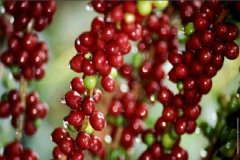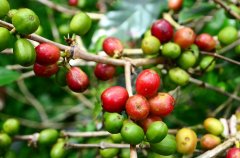Flavor and treatment characteristics of Chery G1 Sidamo Chire Coffee in Sunshine Sidamo Coffee production area
Coffee that is easy to water

Product name: Cedar Mochery Sidamo Chire
Country: Ethiopia Ethiopia
Producing area: Sidamo Chire District, Sidamochiri District
Grade: Grade 1
Treatment method: sun treatment method Natural Process
Variety: Ethiopian native species Ethiopian Heirloom
Altitude: 1900-2000 m
Flavor: citrus, green tea, cherry, maple syrup
Chire District District is located in Sidamo Zone region of Oromia State in southern Ethiopia, Chery Wet treatment Plant is located in Balo Kebele town, and the adjacent and Hamile River River is surrounded by natural forest areas formed by native species of Ethiopian coffee, which shows that the local soil and climate are the best conditions for growing coffee.
The Xirui Wet treatment Plant (Chire Wet Mill), which began operation in 2010 AD, currently has five coffee cherry gathering points in the village. Coffee cherries are planted on the exchange by 650,750 registered local farmers at an altitude of about 1900-2000 meters.
The harvest period for coffee and cherries is from November 1 to January 15 of the following year. The annual output of the processing plant is five containers of washed beans and five containers of sun-dried beans. Before starting the processing of coffee cherries in Xirui wet treatment plant, manual cherry selection is added to ensure the high quality output of the products.
The drying time of washed beans is 10-12 days, and that of sun-dried beans is 15-18 days. Each batch of raw beans is classified according to the quantity of each truck, 150 bags of 60 kg raw beans as a unit, and the export sale begins in February of each year.
Important Notice :
前街咖啡 FrontStreet Coffee has moved to new addredd:
FrontStreet Coffee Address: 315,Donghua East Road,GuangZhou
Tel:020 38364473
- Prev

Introduction to the flavor and taste characteristics of the latest batch of Guji G2 washing Laiya Liya in Sidamo area
Easily watered coffee name: Sidamo Gujia Sidamo Guji Liya country: Ethiopia Ethiopia producing area: Sidamo Sidamo Guji level: Grade 2 treatment method: washing treatment Washed Process varieties: local native species Heirloom Vaireties altitude: 1950-2150 meters flavor: citrus, sugarcane sweet, lemon, grapefruit peel
- Next

Guatemala Santa Felisa Estate 2015 Bid Lot Santa Felisa Flavor Description
Weixin Official Accounts cafe_style Name: Santa Felisa Manor 2015 Bidding Batch Santa Felisa SF04 -01 Country: Guatemala Production Area: Acatenango Processing Method: Washing Process Packaging Form: Geisha 2722 Elevation: 1200 - 1500 km
Related
- Detailed explanation of Jadeite planting Land in Panamanian Jadeite Manor introduction to the grading system of Jadeite competitive bidding, Red bid, Green bid and Rose Summer
- Story of Coffee planting in Brenka region of Costa Rica Stonehenge Manor anaerobic heavy honey treatment of flavor mouth
- What's on the barrel of Blue Mountain Coffee beans?
- Can American coffee also pull flowers? How to use hot American style to pull out a good-looking pattern?
- Can you make a cold extract with coffee beans? What is the right proportion for cold-extracted coffee formula?
- Indonesian PWN Gold Mandrine Coffee Origin Features Flavor How to Chong? Mandolin coffee is American.
- A brief introduction to the flavor characteristics of Brazilian yellow bourbon coffee beans
- What is the effect of different water quality on the flavor of cold-extracted coffee? What kind of water is best for brewing coffee?
- Why do you think of Rose Summer whenever you mention Panamanian coffee?
- Introduction to the characteristics of authentic blue mountain coffee bean producing areas? What is the CIB Coffee Authority in Jamaica?

